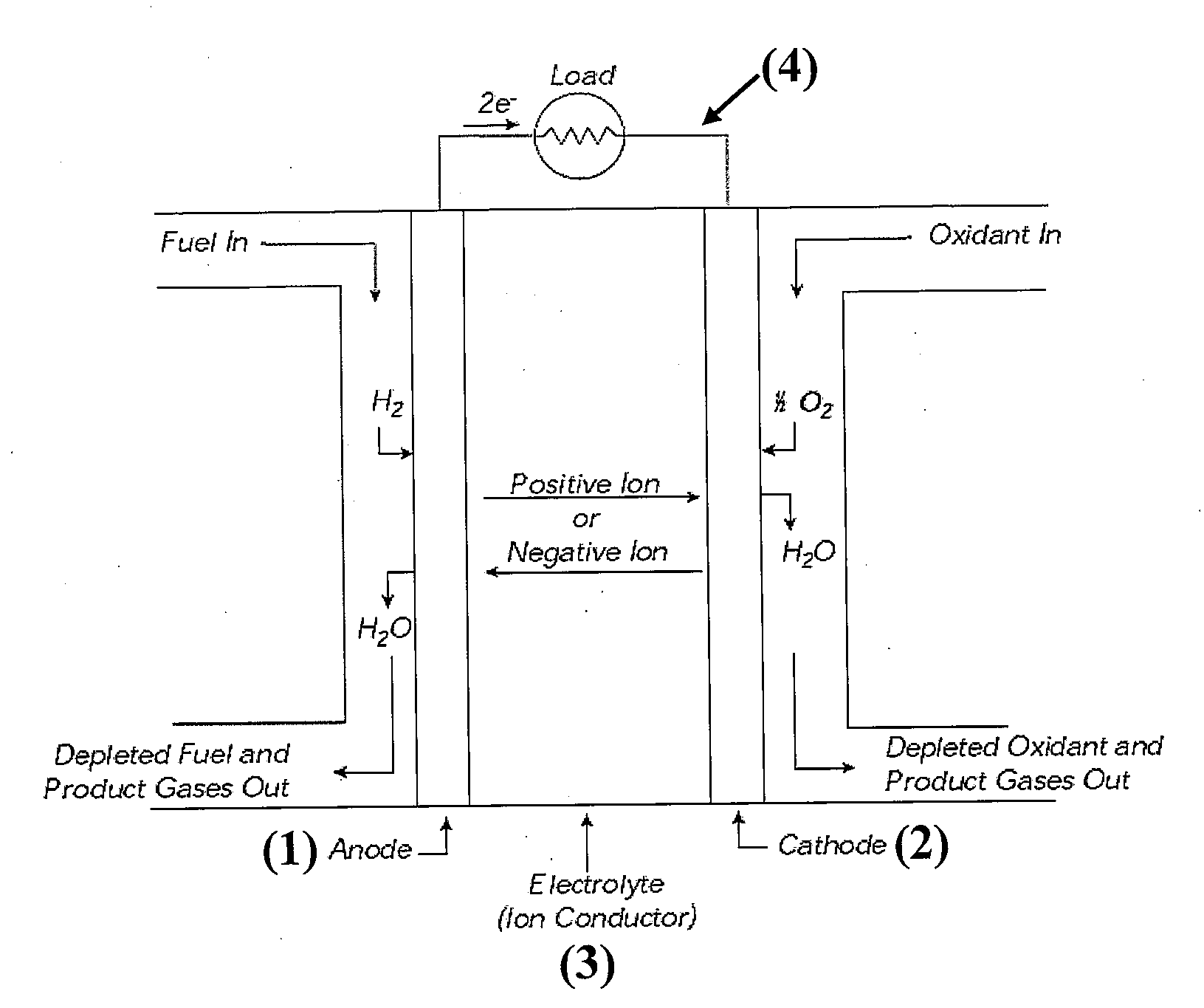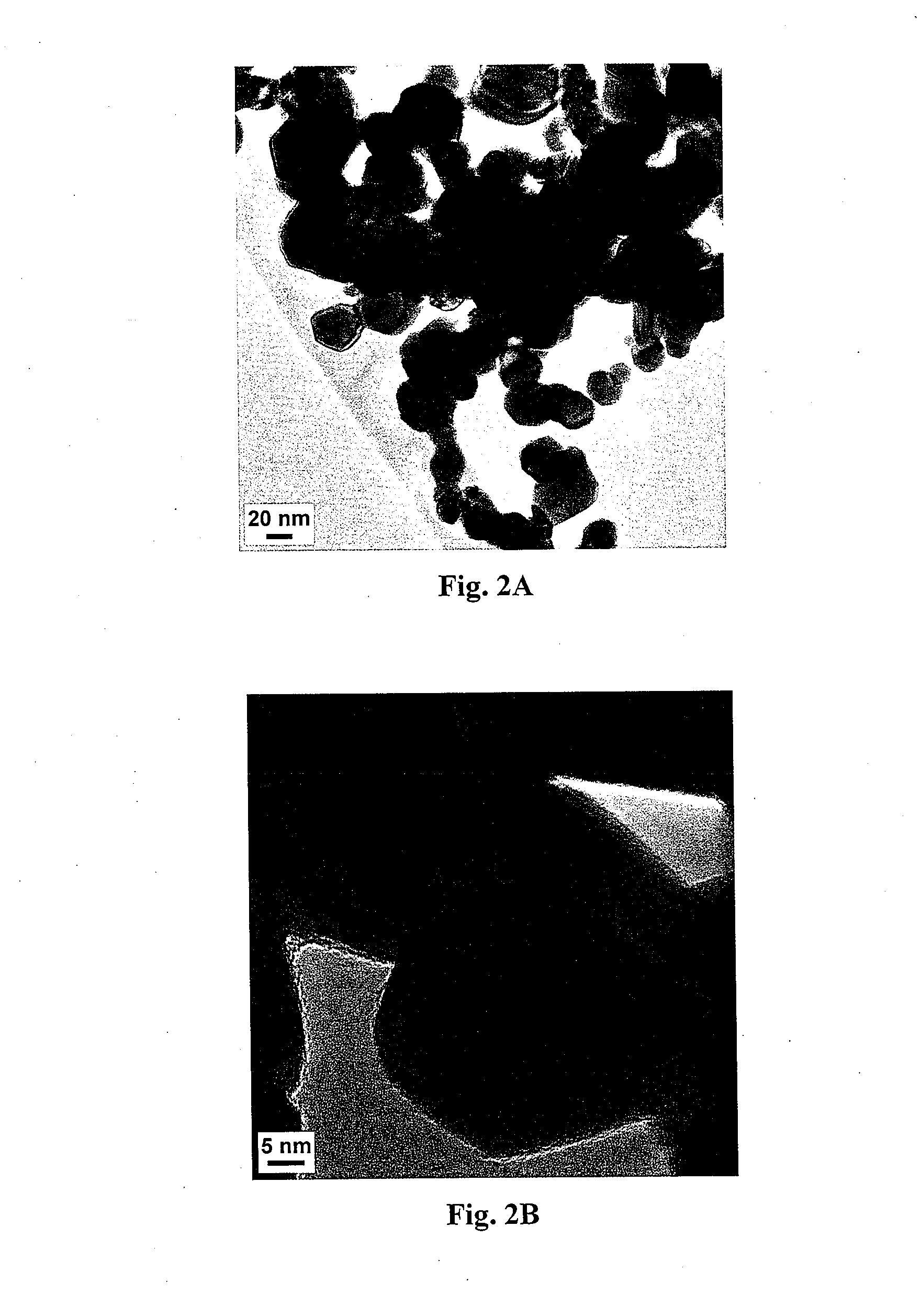Electrocatalyst Synthesized by Depositing a Contiguous Metal Adlayer on Transition Metal Nanostructures
a transition metal nanostructure and electrocatalyst technology, applied in the direction of metal/metal-oxide/metal-hydroxide catalysts, cell components, physical/chemical process catalysts, etc., can solve the problems of high cost, hinder the successful implementation of fuel cells in commercially available fuel cells, and increase the performance and cost efficiency of fuel cells. , to achieve the effect of maximizing the catalytically active surface area, reducing the loading of pt, and improving the kineti
- Summary
- Abstract
- Description
- Claims
- Application Information
AI Technical Summary
Benefits of technology
Problems solved by technology
Method used
Image
Examples
Embodiment Construction
[0026]These and other attributes of the invention will become more apparent from the following description and illustrative embodiment which are described in detail with reference to the accompanying drawing. In the interest of clarity, the following terms are defined as provided below:
Acronyms
[0027]ALD: Atomic Layer Deposition[0028]CVD: Chemical Vapor Deposition[0029]FCC: Face Centered Cubic[0030]MBE: Molecular Beam Epitaxy[0031]ORR: Oxidation Reduction Reaction[0032]PVP: Poly(Vinyl Pyrrolidone)[0033]RHE: Reversible Hydrogen Electrode[0034]TEM: Transmission Electron Microscopy[0035]UPD: Underpotential Deposition
DEFINITIONS
[0036]Adatom: An atom located on the surface of an underlying substrate.[0037]Adlayer: A layer of atoms adsorbed to the surface of a substrate.[0038]Bilayer: Two consecutive layers of atoms or molecules which occupy all available surface sites on each layer and coat the entire surface of the substrate.[0039]Catalysis: A process by which the rate of a chemical reac...
PUM
| Property | Measurement | Unit |
|---|---|---|
| length | aaaaa | aaaaa |
| diameter | aaaaa | aaaaa |
| diameter | aaaaa | aaaaa |
Abstract
Description
Claims
Application Information
 Login to View More
Login to View More - R&D
- Intellectual Property
- Life Sciences
- Materials
- Tech Scout
- Unparalleled Data Quality
- Higher Quality Content
- 60% Fewer Hallucinations
Browse by: Latest US Patents, China's latest patents, Technical Efficacy Thesaurus, Application Domain, Technology Topic, Popular Technical Reports.
© 2025 PatSnap. All rights reserved.Legal|Privacy policy|Modern Slavery Act Transparency Statement|Sitemap|About US| Contact US: help@patsnap.com



